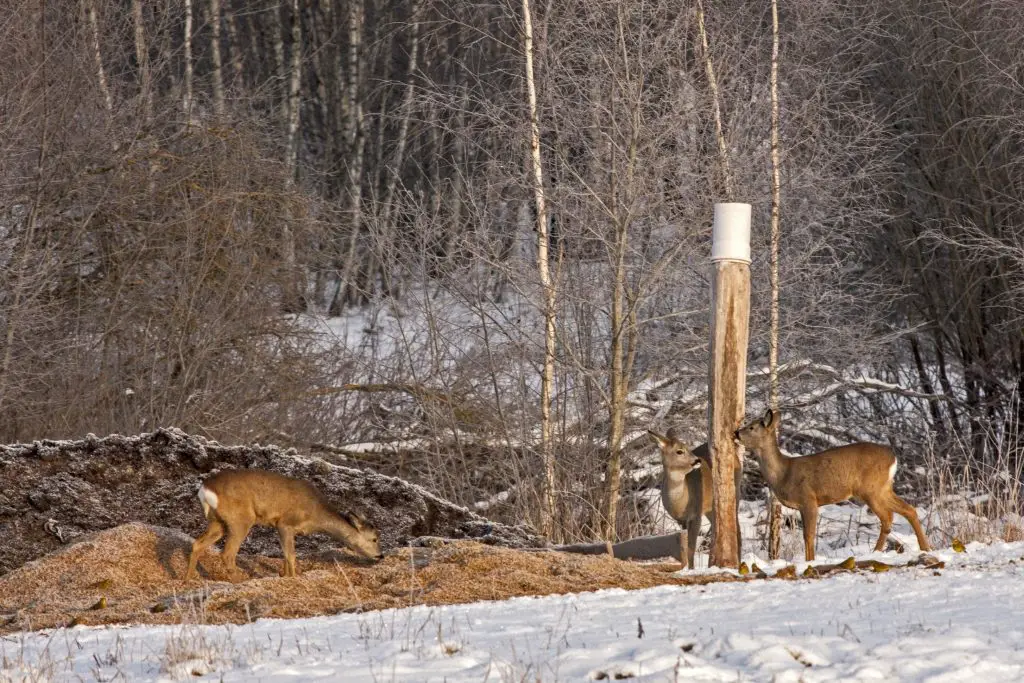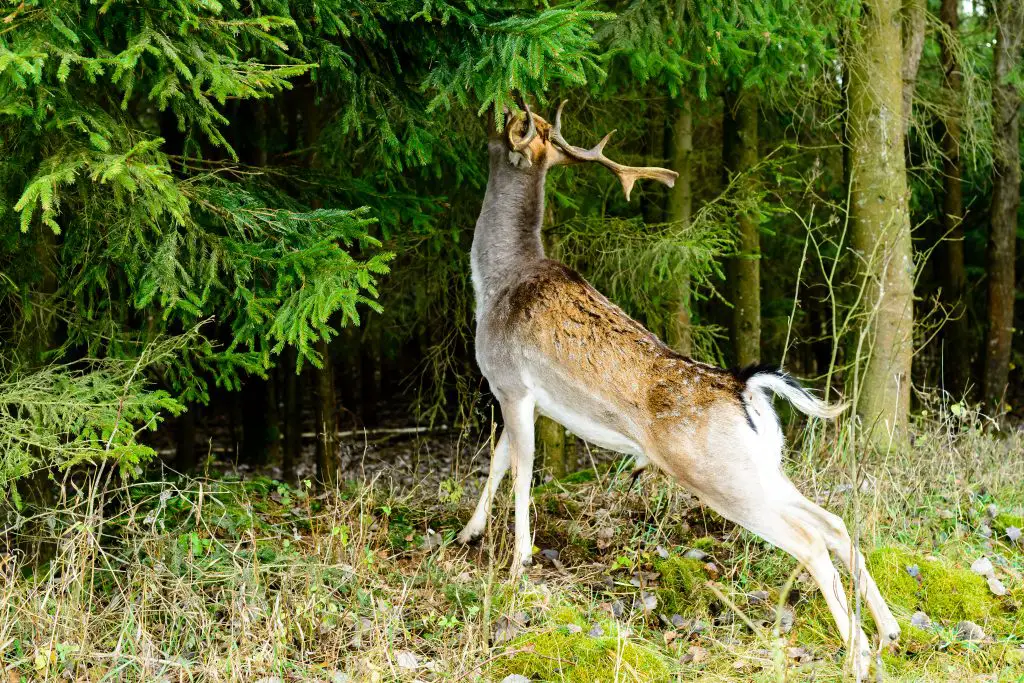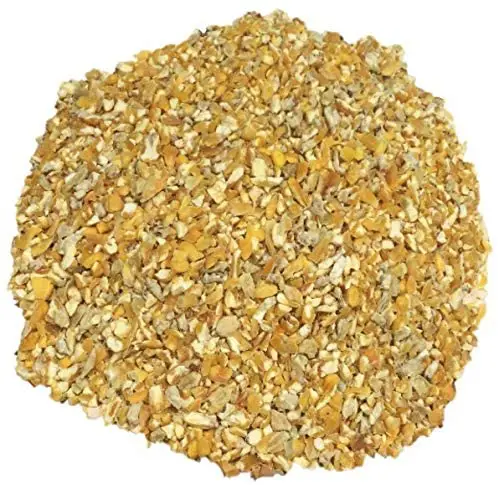Last Updated on May 13, 2023 by
Deer feeders can be expensive, so many hunters look for ways to build their own. In this step-by-step article, we show you exactly how to make your very own deer feeder. Enjoy, and wait as the deer come to visit.

Pvc Pipe Deer Feeder
My first favorite is made from a long wide tube of PVC pipe with a cap on the top. At the bottom of the pipe place a 90-degree elbow and then a 45-degree angle pointing up forming a “J” shape. You will be able to get all the material from any store that sells plumbing products.
This will allow you to fill up the tube and the grain won’t fall out directly. The deer will be able to eat from the 45-degree angle piece. As they eat, gravity will refill the base with grains. The only down fall with the pipe feeder is that you will need to visit to refill more often as it is smaller than the barrel or bucket feeder unless you use more pipes.

Y Shape Feeder
Other variations of the PVC pipe style gravity feeders only change at the bottom. For some, they use a 45-degree “Y” attachment piece having the 45 degrees part pointing up, and for the bottom hole they use a cap with a form of grating cuts in it.
L Shape Feeder
Here’s how make the L shape. Use a 90-degree elbow and then more PVC pipe length and a cap on the end. Then on the horizontal section, cut the top layer to form a gutter type trough to eat out of.You can then attached it to a tree or or fence post or drive a post into the ground. you could get creative and even build a roof shelter over it.
My second favorite is using the same concept as the pipe but on containers. Use a barrel or 5-gallon container or even a big bucket with a hole or holes at the bottom and attach the PVC pipe to the hole and make a tray and secure it.
For a feeder to be effective, you shouldn’t hunt it straight away. Deer are very shy of a feeder the first year you put it out. To create and develop an area where you can bag big bucks with your bow or crossbow, the does must bring their fawns to the feeder and feel comfortable feeding around it. Then, as those buck fawns grow and develop, they’ll be seasoned to the feeder and feed in daylight hours around it. But if you hunt deer around a feeder the first year you put it out, the does will quickly learn there’s danger at the feeder; and they’ll teach that fact to their babies, especially to their buck fawns.”
Do Gravity Feeders Work For Deer?
The gravity feeder has the most basic function to distribute the feed through gravity, the feed falls to the port where the deer can eat. And yes they do work and are used by many hunters. There are also different types with varying capacities, but most have a large food capacity so if you cannot visit your feeder regularly its best to have a larger barreled one. Sometimes the ports are adjustable to let you control the amount of feed that it can store. one major drawback is that raccoons, squirrels and other wildlife might feed on it too. This will mean that you will have to refill the container more so bigger is better in my opinion.
What Do Deers Love To Eat The Most?

White-tailed deer look for food around dawn and dusk each day. Deer are herbivores, which means they eat only plants. What they eat depends on the season and where they are living. In spring and summer, favorite protein-rich foods for deer include leaves, fruits, alfalfa, clover and grasses for growth. In fall and winter, they eat starchy or sugary fungi, corn, nuts, acorns, twigs, and buds from plants.
Like most hooved animals, white-tailed deer are ruminants. They have four-chambered stomachs that help them eat hard-to-digest foods. The first two chambers of the stomach break down food and create something called cud. The cud is then regurgitated, chewed some more, and finally, swallowed and digested. Deer will eat anywhere from 4 to 10 pounds of forage per day
How Do You Attract Deer To Your Stand?
Corn is very effective in drawing the deer in towards your feeder. Start with a deer corn feeder to attract the deer and then you can train the deer to eat the food pellets instead. Scatter some corn all around the feeder and then a bit farther away from the feeder. This way the deer will get used to the idea of having corn in the area. Then, every day, you can shorten the distance to the feeder until the corn is right in the feeder.

Most hunters who bag deer with their bow or crossbow over bait the area. You increase the effectiveness of hunting at a deer feeder if you place your tree stand near trails leading to that feeder too. Then, if you shoot at a deer and miss or even bag the deer on the trail leading to the feeder, the deer won’t likely stop coming to the feeder during daylight hours. The deer may change trails and use different approaches to the feeder. But most deer will use a feeder, as long as no one takes shots at them at the feeder site. The further away from the feeder you set-up your tree stand, the less likely that you’ll scare the deer from using that feeder.
